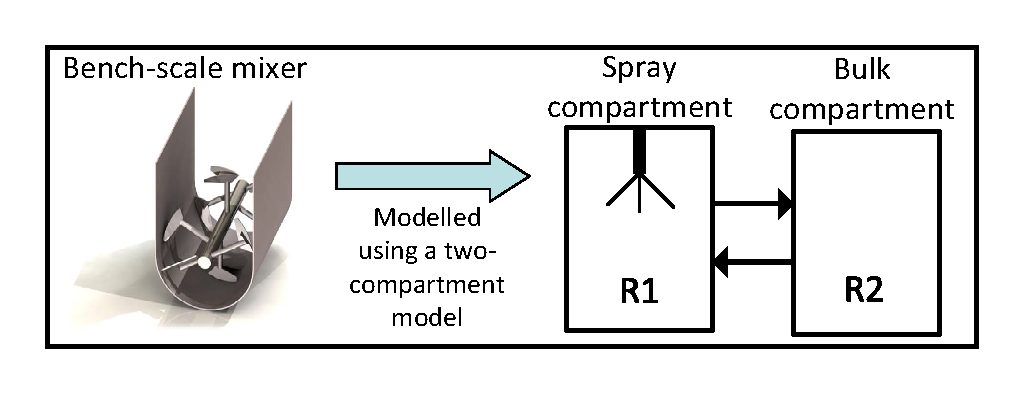A multi-compartment population balance model for high shear granulation
- A batch granulation process is modelled using a compartmental model.
- A population balance model for granulation is extended to have multiple compartments.
- A stochastic weighted algorithm is adapted to the population balance model.
- The compartmental model is optimised using experimentally measured size distribution.
- The fit to experimental data is improved with the compartmental model.
 This work extends the granulation model published by Braumann et al. (2007) to include multiple compartments in order to account for mixture heterogeneity encountered in powder mixing processes. A stochastic weighted algorithm is adapted to solve the granulation model which includes simultaneous coalescence and breakage. Then, a new numerical method to solve stochastic reactor networks is devised. The numerical behaviour of the adapted stochastic weighted algorithm is compared against the existing direct simulation algorithm. Lastly, the performance of the new compartmental model is then investigated by comparing the predicted particle size distribution against an experimentally measured size distribution. It is found that the adapted stochastic weighted algorithm exhibits superior performance compared to the direct simulation algorithm and the multi-compartment model produces results with better agreement with the experimental results compared to the original single-compartment model.
This work extends the granulation model published by Braumann et al. (2007) to include multiple compartments in order to account for mixture heterogeneity encountered in powder mixing processes. A stochastic weighted algorithm is adapted to solve the granulation model which includes simultaneous coalescence and breakage. Then, a new numerical method to solve stochastic reactor networks is devised. The numerical behaviour of the adapted stochastic weighted algorithm is compared against the existing direct simulation algorithm. Lastly, the performance of the new compartmental model is then investigated by comparing the predicted particle size distribution against an experimentally measured size distribution. It is found that the adapted stochastic weighted algorithm exhibits superior performance compared to the direct simulation algorithm and the multi-compartment model produces results with better agreement with the experimental results compared to the original single-compartment model.
- This paper draws from preprint 149: A multi-compartment population balance model for high shear granulation
- Access the article at the publisher: DOI: 10.1016/j.compchemeng.2015.01.009



